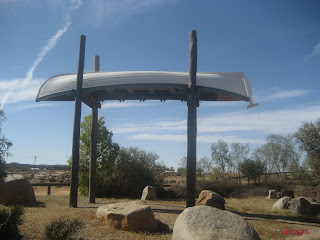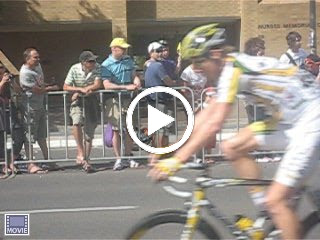We woke to a sky as blue as the Caribbean Sea. A night of breathing the fresh alpine air had calmed our mind and body, and we were looking forward to a day on the trails to sooth our souls. The climb would be minimal. We were already at 1500m and the highest peak in the area was around 1900m. But still, the idea of meandering through the treeless heathlands and meadows, where the winter conditions are too harsh for much to grow, was appealing.
Our morning stroll started at the Rocky Valley Dam. The reservoir sparkled in the sunlight, reflecting the white tufts of clouds in the blue sky. We slowly zig-zaged away from the water. In the distance, a grove of snow covered trees came into sight. Unfortunately, the trees were not covered in snow, but instead they were the victims of a not so distant in time fire. I found it ironic how in their current condition the name Snow Gum ideally suited the trees before us.
We continued up a gully, cut by a small stream. The vegetation consisted of grasses, mosses, and wild herbs. The low lying vegetation was so lush and green it was hard to believe that up until 2006 cattle grazing was permitted in this area.
Lunch came early, and after just a couple of hours on the trail we found ourselves sitting on a granite outcrop enjoying a spectacular view while eating a can of dolmas. As we soaked in the warm rays, appreciating the shimmering blue, undulating hills and the rocky outcrops around us we decide we weren't ready to head back to the car. We knew that we could continue on our current course and eventually hit a spur that would take us to the road, and that would return us to our starting point.
Our post lunch journey began with a slow descent from the mountain top down towards the valley. Once again as we merged with the creek we were greeted with what appeared to be more winter scenes. The rippling floor of the alpine meadow appeared to be covered in snow. However, they were Snow Daisies. The fields of white flowers that surrounded us were dotted with yellow, blue, purple, and orange. We were in the heart of alpine wild flower country. It was spine-tingling to think that such stunning flowers could exist in such a inhospitable environment.

We had one more small ascent before we would head into the valley below. We crested just below Spion Kope Peak where we were treated to stunning views of the Mt. Beauty Valley. The trail now followed the rolling mountain spine. As the track left the barren mountain landscape and entered the tree line, the trail slowly became more and more overgrown. It was obvious that this trail did not receive a lot of traffic, but there were signs--foot prints and trash--that someone had recently passed through. We began to question if the spur we were supposed to catch off the fire track would be marked or completely overgrown. Had it not been for Mark's altimeter we would probably have turned around, but when we compared the numbers on the small gadget to those on the map, we still had several hundred meters to drop before reaching the elevation of the spur.

The condition of the trail continued to deteriorate and at one point it was completely obstructed by a fallen tree. After struggling to get around it, we could not find the path. The understory had become impassible. Further exploration finally brought us back to the semi-worn path. It had cut sharply to the left, rather than continuing straight. Even though we were once again on the "trail", a sense of uncertainty began to grow. I tried to hold my fear at bay and put one foot in front of the other, continuing on our downward journey. Suddenly there in the distance a large sign stood in the middle of the track. The spur was marked, and relief washed over me.
But the good feeling was short lived. As we looked at the spur, the entrance was covered with silk worm webs. Mark took the lead, attempting to remove the thousands of webs with a stick, but his efforts proved futile--they were everywhere. The sticky strings attached themselves to our hands, hair and body. Worms were crawling all over us. To complicate matters the terrain had become extremely steep and slick, and the ground very uneven. In order to focus completely on our footing we stopped and put on our fly nets. At least our face and heads were protected from the sticky substance that filled the trail before us.
We were forced to use vines and boulders as handgrips and footholds. They served as brakes, stopping us from sailing straight down the hill. For each branch we accidently broke, mother nature fought back, scratching, chaffing, cutting, gouging and lashing our exposed skin.
I began to curse. The spur trail, no longer exists. It was destroyed when a fire in 2006 raged through the area. Rather than closing the trail, hikers were allowed to continue to to bush whack through the area. The result was a trail, but not the kind that in my mind leads to an enjoyable walk in the woods. We found ourselves dropping straight down the side of a hill through a tangled blanket of undergrowth.
Just when we thought things couldn't get worse, we stumbled into an area of hundreds of felled trees.
Packs were removed, and I felt like a contortionist as we tried to weave ourselves through our newly presented obstacle course. I flung my left leg over a huge trunk, and within seconds I was on my back on the ground. Without their bark--removed by the fire--the trunks were extremely slippery. Mark quickly pulled me to my feet before I had time to wallow in pity or to surrender. He took the lead as we approached the next large trunk. Rather than sitting on it, he attempted a side plank hop, and before I knew it he had rolled off the trunk and disappeared into the undergrowth. I froze with fear, and was unable to let out a scream. Fortunately he had landed in a small vegetated depression, and within seconds popped up to assure me that all was well.
At this point we stopped to catch our breath and collect our wits. As we leaned against the log, I took in my surroundings. Once again I was acutely aware of the contrast of life and death--the worms, thick understory, fallen trees, fire devastation and the babbling brook. But wait--I soon realized that the sound I heard was not a babbling brook, but a river. We were dropping straight to the river. In my panic I began to shout, "Oh shit, oh shit! How the hell are we going to get across the river." Rather than acknowledging my fear, Mark began to walk. He knew if he got me moving I would have to focus on the moment rather that what lay in front of us.
His plan worked and only a few steps later I gracelessly thumped on to my bottom. As I stood, Mark reminded me to dig in my heels to help fight inertia. This and keeping low in the legs proved to be fruitless. I was soon sitting on my heels flying down the side of the hill. Visions of Indiana Jones popped into my head, and I could only hope I would stop short of the river. Fortunately, with the help of some vines I was able to stop. After a grueling 40 minutes we did arrive at the river; it was time to face another demon.

There was a semi-bridge with a log, but it required a long jump at the end to reach the other side. Mark was able to make the jump with no problem, but there was no way I could do it. I sat on the end of the log, trying to reach the bottom of the river with my poles with no luck. Crossing the water by foot was not an option unless I wanted to swim. Mark was able to balance a log on a low lying rock. We both then stood on the opposite ends of the log, a bit like a teeter tooter, and quickly moved to the center. I had made it across, but it was a miracle that we both didn't end up in the river.
We were now faced with a climb to the road. As we stood on the river bank looking at the sheer cliff before us, we became concerned. It was at this point that my confidence as an uphill climber kicked in. Rather than slipping into hysteria, I reflected on all our previous hikes. In the past when faced with a cliff, the path has always followed a crevice. Sure enough, just to our right there was a faint path that allowed us to easily ascend the cliff. Too our relief at the top of the cliff was a well maintained fire track that took us straight to the the road.
Once on the road, we considered hitch-hiking. However, I doubted that anyone would want to pick up two people who were covered in mud, dirt, worms, and webs. Actually, considering the ordeal that we had just gone through we were able to make excellent time on the road, and within an hour and a half we were once again in our vehicle heading back to our oasis of a campsite.























































